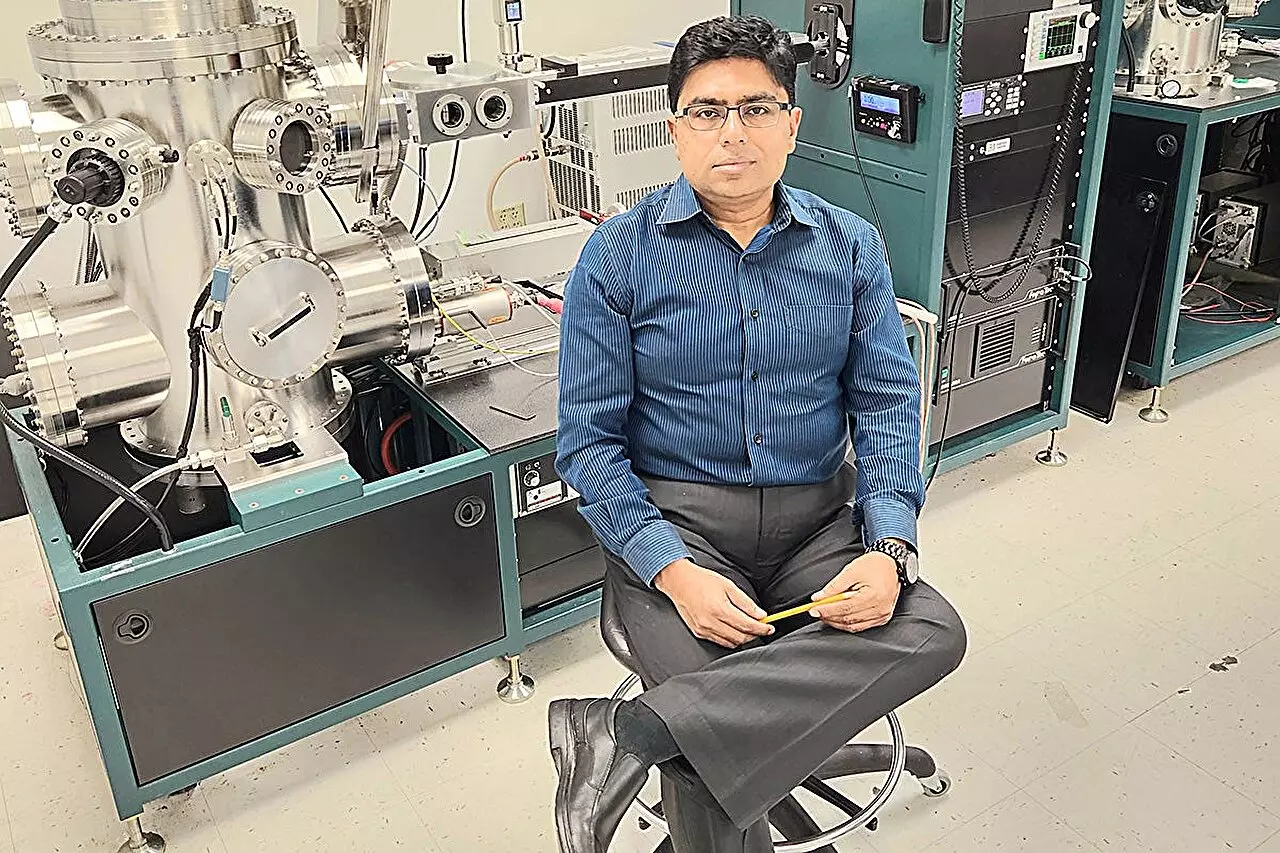

University of Central Florida researcher, Debashis Chanda, has made significant progress in the field of photon detection. Chanda’s new technique involves modulating the frequency of an oscillating circuit to detect photons, rather than relying on the traditional method of changing voltage or current amplitude. This groundbreaking development has the potential to revolutionize various industries, including medicine, communication systems, scientific research, and security measures.
Chanda’s method utilizes a special phase-change material (PCM) that undergoes a transformation when exposed to light. This transformation creates a stable electrical circuit oscillation, or rhythm. When a photon interacts with the material, it alters the oscillation frequency, depending on the intensity of the light. This modulation of the circuit’s frequency allows for ultra-sensitive photon detection, akin to how a person’s voice changes the sound on a radio.
Long Wave Infrared (LWIR) detection, specifically in the 8 to 12 micrometer wavelength range, holds great importance in various fields such as astronomy, climate science, materials analysis, and security. However, the challenge of achieving LWIR detection at room temperature has been a longstanding obstacle. Currently available LWIR detectors are divided into two categories: cooled and uncooled detectors, both with their own limitations. Cooled detectors offer excellent detectivity but require cryogenic cooling, rendering them expensive and impractical. Uncooled detectors, on the other hand, can operate at room temperature but lack sensitivity and have slow response times. Thus, a low-cost, highly sensitive, and fast infrared detector/camera has remained elusive.
Chanda’s FM (frequency modulation)-based photon detection technique offers a game-changing solution to this challenge. Unlike current photon detection approaches that rely on amplitude modulation (AM), where light power alters voltage or current amplitude, Chanda’s scheme utilizes the modulation of an oscillating circuit’s frequency to detect incidents of photons. This frequency modulation provides inherent robustness to noise, which is usually of an AM nature, resulting in outstanding room temperature noise equivalent power, response time, and detectivity. Furthermore, this FM-based photon detection concept can be implemented in any spectral range using other phase-change materials, opening up endless possibilities for technological advancements.
The results of Chanda’s research bring forth a groundbreaking concept in uncooled LWIR detection. The improved sensitivity and inherent noise robustness make it an ideal platform for the development of low-cost, high-efficiency infrared detectors and imaging systems. These systems hold great potential for various applications such as remote sensing, thermal imaging, and medical diagnostics. Chanda believes that with further development in industry-scale packaging, the performance of these detectors can be further enhanced.
Debashis Chanda’s innovative breakthrough in photon detection technology has paved the way for more precise and efficient technologies in multiple sectors. By utilizing frequency modulation and a special phase-change material, Chanda has created a platform for low-cost, high-sensitivity photon detection. This development has the potential to greatly impact fields such as medical imaging, communication systems, scientific research, and security measures. With continued advancements and industry-scale packaging, the possibilities for this technology are boundless.
Natural gas leaks are a growing concern in both urban and rural settings, with potential…
Recent groundbreaking research at the University of Vienna has unveiled a novel interplay of forces…
In recent years, perovskites have garnered significant attention in the fields of materials science and…
For decades, astronomers have probed the depths of the Milky Way, grappling with two perplexing…
Foreign direct investment (FDI) in developing nations has long been heralded as a path to…
As spring beckons in April and May, stargazers have the unique opportunity to witness nature's…
This website uses cookies.